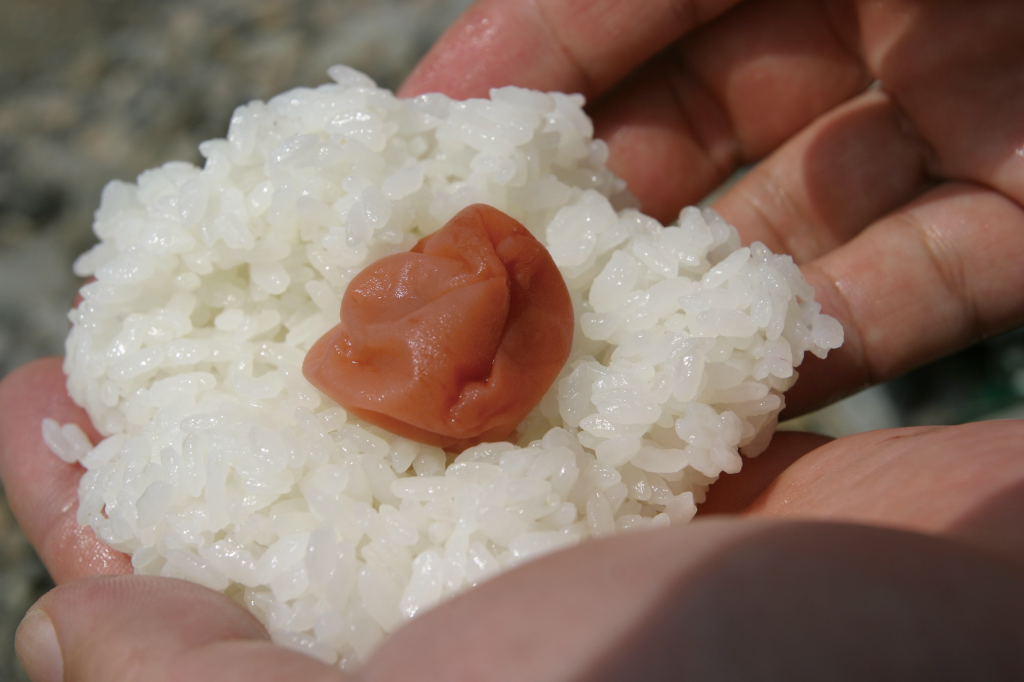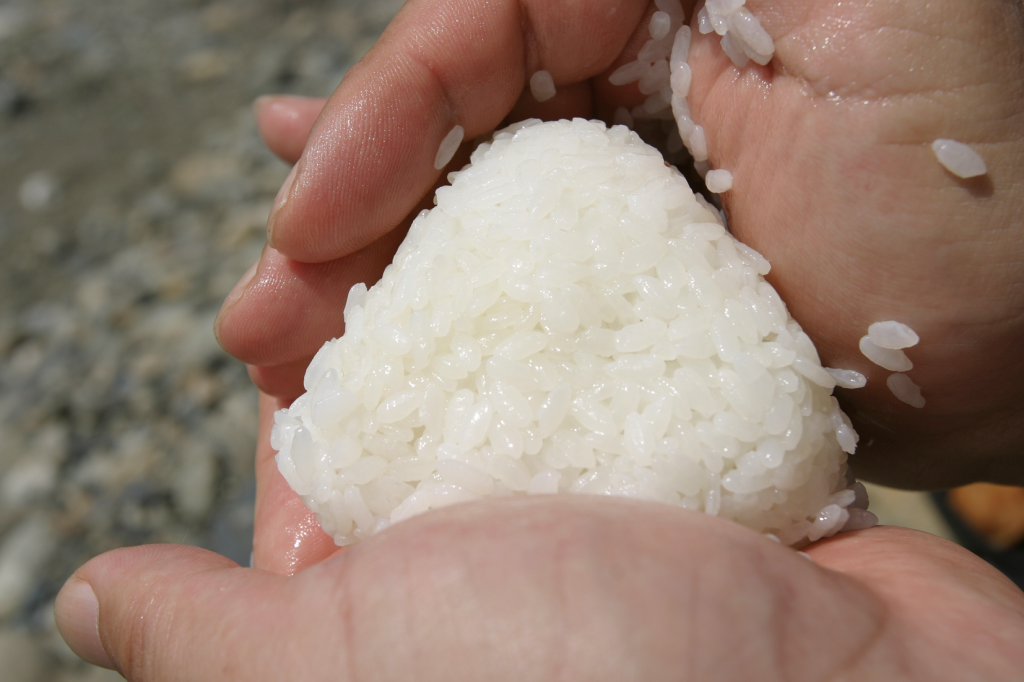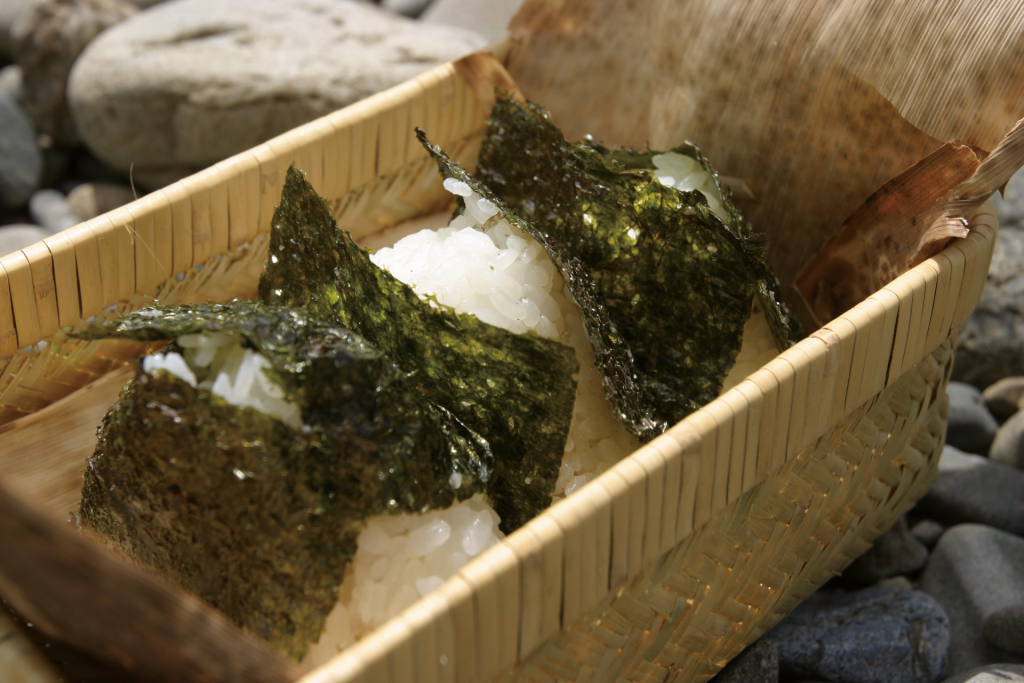Ingredients
- Rice
- Salt
- Pickled plum, sliced lox (cooked), etc.
- Dried seaweed or roasted sesame seeds
Japan’s best-known portable food is omusubi (rice balls), or more commonly referred to as onigiri. The staple of any Japanese diet is rice, and omusubi is the perfect snack for the road. Whether it is workers in the fields or day trips for school children, omusubi have been the people’s choice for outdoor lunches since long ago.
Evidence of omusubi as far back as the Yayoi Era (500 B.C. – 300 A.D.) has been unearthed, historically placing it on a par with rice cultivation. Japanese often say their “energy comes from rice.” A common phrase for climbers being out of energy is “sharibate,” shari refers to rice and “bate” means exhaustion.

1. Cook the rice so it remains slightly rigid. Normally, one cup of rice requires 1.2 cups of water; however, for omusubi cut back on the water just a bit.
Nigiri literally means “to knead” or “grip,” the action associated with making onigiri (the honorific “o” is added at the beginning). However, I prefer the term omusubi, as musubu means to “connect,” as in the connection between two people.
Both long and short-grain rice is available, with Thai rice being the former and Japanese rice the latter. Long-grain rice is less moist and perfect for rice dishes, while the Japanese strain is best suited for omusubi.
Omusubi vary in both shape and ingredients; however, your basic flavor would be either pickled plum or salmon lox. In Nagoya they include tempura (deep fried food) to create ten-musu, and Hawaiians use Spam (pork lunchmeat) to make the popular Spam-musu.

2. After the rice has finished cooking, rinse your hands in salt water, and using both hands, knead the rice around the contents. Wrap with seaweed or, if that’s not your thing, simply sprinkle with roasted sesame seeds.
Another garden variety is norimaki, in which you simply wrap the rice in a layer of dried seaweed. Some venture that foreigners’ distaste for the feel of seaweed is what inspired the California Roll where the seaweed is rolled on the inside.

I recall being stopped once at the Seattle airport’s immigration line and asked, “What’s this stuff that looks like carbon paper?” You can imagine the inspector’s surprise when I promptly began to eat the evidence.





